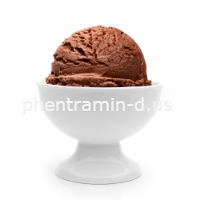 Oh, the irony! You go to the supermarket, choose low-fat cookies over the regular ones, patting yourself on the back and thinking what a healthy decision you’ve made. Hmm, think again. Actually, let us help you think again, logically. Not only can reduced fat foods make you fat, but they are actually more dangerous than consuming moderate amounts of saturated fat, as revealed by the Harvard School of Public Health. Take a look at why it is time to end the “low-fat myth!”
Oh, the irony! You go to the supermarket, choose low-fat cookies over the regular ones, patting yourself on the back and thinking what a healthy decision you’ve made. Hmm, think again. Actually, let us help you think again, logically. Not only can reduced fat foods make you fat, but they are actually more dangerous than consuming moderate amounts of saturated fat, as revealed by the Harvard School of Public Health. Take a look at why it is time to end the “low-fat myth!”
To begin with, reduced fat foods are loaded with chemicals. Why, you ask? Low-fat foods become dry and bland when the fat is removed, whereas foods with fat tend to taste better. To compensate for this loss of taste, extra fillers, tons of salt and sugar, and other artificial flavors are added to these foods to the point where it becomes scary and unhealthy for consumption. Now who wouldn’t want to eat the so-called reduced fat foods when they taste as good as normal food?
The common belief is that low-fat products are less caloric than their non-low-fat counterparts, but here’s how, most of the time, this statement becomes invalid: a serving of low-fat food offers around 59% less fat than regular versions. What happens now (as per research by Mrion Nestle and Brian Wansink) is that when we think a food is low in fat, we tend to consume more of it. In fact, we end up eating to an estimate of around 50% MORE calories than we would otherwise.
Another problem with these products, apart from the fact they are not a natural food source, is they have been shown to stimulate your appetite. If the foods you are eating contain artificial sweeteners, like you find in diet soft drinks and sugar replacements for your coffee, your body’s ability to detect fullness is compromised. This means your brain will not be able to receive the message from the stomach that it is full. This also means a complete knock-out of the ‘low-fat foods are weight-loss foods’. Think about the main cause of fat build-up. Sugar perhaps? So, while you think you are saving on calories, all that extra sugar added in your low-fat food is not doing you any real favors.
You may now hopefully be wondering about ways to avoid the low-fat trap. What you should do is thoroughly read the nutrition labels and pay close attention to the calorie count. Be aware of the different serving sizes. Take help in understanding those sizes through different websites, and measure single servings of on-the-go snacks. In general, try avoiding reduced fat foods altogether and substitute them with non-low-fat foods, but keep in mind to not go crazy and consume in moderate quantities.


Recent Comments